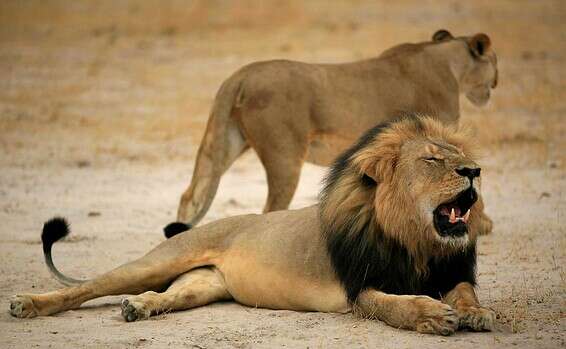The tiny ant species Pheidole megacephala ("giant-headed ant") has a significant impact on the ecosystem in Kenya's Ol Pejeta Nature Reserve, as revealed in a study published last week in the journal Science.
Its influence is so dramatic that it threatens the king of animals - the lion.
how does she do it
We enlisted the help of Forefront to find out.
The tiny, big-headed ant (literally) disrupts the mutualistic relationship between acacia trees and another ant species, which historically protected the trees from large herbivores, such as elephants.
It led to the destruction of the ants protecting the trees, leaving the acacia trees vulnerable to destruction by elephants.
The consequences of this disruption are far-reaching;
The trees, which are no longer tangled as before, do not provide the lions, the top predators that dominate the area, with the shelter they are used to to hide from their prey until it is near them.
Thus, they find it more and more difficult to hunt their favorite prey - zebras.
This forces the lions to change their hunting strategies.
As a result, they turn their attention to the buffaloes, who, on the one hand, run less fast, but on the other hand, unlike the zebras that run away individually, behave as a cohesive group, when they use their enormous size to fight predators together.
The research, which spans three decades and uses a combination of motion-activated cameras, satellite tracking of lions and statistical models, highlights the complex web of interactions between different species in the ecosystem.
It highlights the profound impact seemingly minor changes, such as the introduction of an invasive ant species, can have on an entire ecosystem.
Ecologist Todd Palmer from the University of Florida, who led the study, emphasizes the importance of understanding the ecological consequences of invasive species.
The study not only sheds light on the immediate effects of the large-headed ant invasion, but also raises concerns about the long-term implications for the conservation of lion populations, which are already endangered.
In response to the findings, the researchers are now focusing not only on studying the phenomenon, but also on examining possible interventions to mitigate the impact of the large-headed ant invasion on tree populations.
Options include measures such as temporarily fencing off large herbivores to minimize the destructive effects of the invading ants on the trees.
were we wrong
We will fix it!
If you found an error in the article, we would appreciate it if you shared it with us

